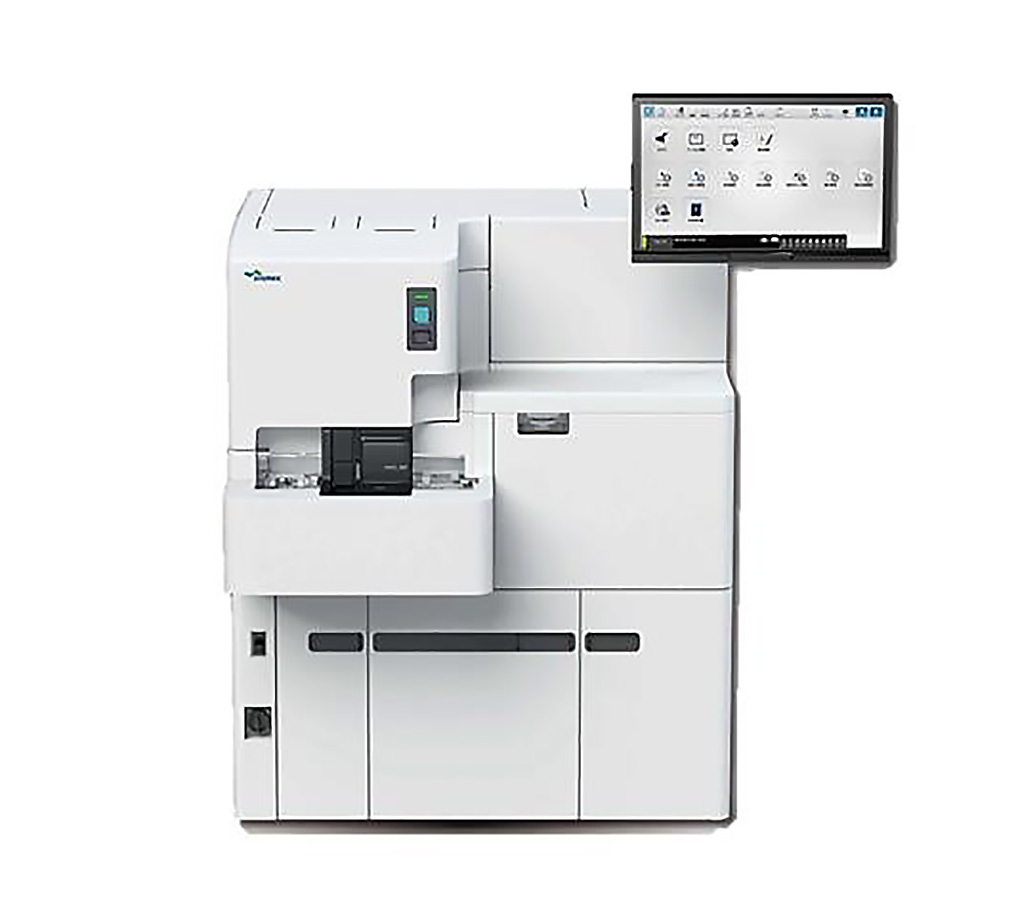Novel Glycoprotein Biomarker Evaluated for Liver Fibrosis
By LabMedica International staff writers
Posted on 13 Apr 2020
The main pathological consequence of chronic liver diseases is the continuous deposition of collagen fibers, which causes progressive liver fibrosis, and eventually cirrhosis. Mild‐to‐moderate fibrosis is rarely diagnosed because the disease is asymptomatic in the early stage.Posted on 13 Apr 2020
While liver biopsy is the current gold standard for determining the fibrosis stage, it not only has its own limitations, such as the risk of sampling error, high rates of interobserver differences, risk of complications, and the high cost but is also not well accepted by patients. The utility of a recently discovered a novel serum glycomarker for liver fibrosis has been studied.

Image: The HISCL-5000 is a fully automated immunoassay analyzer with a throughput of 200 tests per hour (Photo courtesy of Sysmex).
Scientists at the Korean Health Promotion Research Institute (Seoul, Korea) determine the diagnostic performance of Mac‐2 binding protein glycosylation isomer (M2BPGi) in screening liver fibrosis using magnetic resonance elastography (MRE) as a reference standard and to compare it with using the aspartate aminotransferase‐to‐platelet ratio (APRI) and the Fibrosis‐4 index (FIB‐4) in health checkups. The 236 examinees comprised 103 with normal subjects, 100 with fatty liver, five with chronic liver disease, five with liver cirrhosis, and 23 with HBsAg (+) based on ultrasonography or abdominal computed tomography.
Venous blood was drawn after an overnight fast for health checkups that included complete blood count (CBC), biochemical measurements, and M2BPGi. CBC and biochemical parameters were measured using the Sysmex XE‐2100D analyzer (Sysmex, Kobe, Japan) and the Hitachi 7600 analyzer (Hitachi, Tokyo, Japan). The serum M2BPGi level was measured using a chemiluminescence enzyme immunoassay method on an automated immunoassay analyzer, the Sysmex HISCL‐5000.
The median (interquartile) values of the cutoff index (COI) for fibrosis stages F0 (normal liver stiffness), F1 (mild fibrosis), F2 (significant fibrosis), and ≥F3 (advanced fibrosis) were 0.49 (0.34‐0.61), 0.48 (0.38‐0.68), 0.64 (0.43‐1.03), and 1.01 (0.75‐1.77), respectively. The AUCs of the COI for the screening of fibrosis stage ≥F1, ≥F2, and ≥F3 were 0.591, 0.698, and 0.853, respectively. Using a threshold of 0.75 for COI to exclude advanced fibrosis had a sensitivity, specificity, and negative predictive value of 80.0%, 77.9%, and 98.9%, respectively. The AUC for excluding advanced fibrosis was better for M2BPGi than for FIB‐4 and APRI.
The authors concluded that COI of M2BPGi was useful for the screening of significant and advanced fibrosis in health checkups. Screening for liver fibrosis could identify examinees with pre-symptomatic chronic liver disease susceptible to interventions. M2BPGi could also be integrated into a clinical algorithm to help primary care units to identify patients who should undergo MRE for diagnosing significant and advanced fibrosis. The study was published on March 29, 2020 in the Journal of Clinical Laboratory Analysis.
Related Links:
Korean Health Promotion Research Institute
Sysmex
Hitachi









 Analyzer.jpg)




